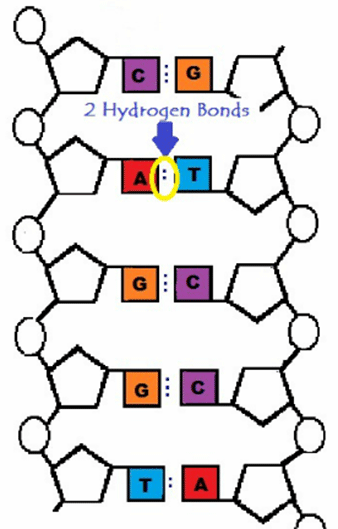Structure of DNA
What does DNA look like?
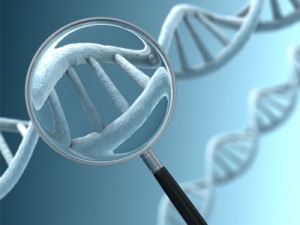
The basic structure of DNA is described as a double helix or twisted ladder.
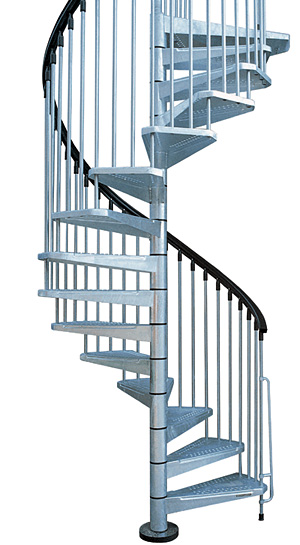
Nucleotides are the building blocks of DNA.
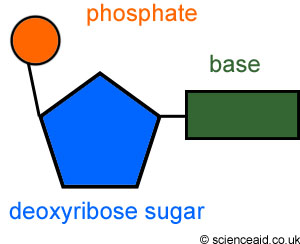
There are 3 parts to a nucleotide.
- Phosphate
- Deoxyribose Sugar
- Nitrogen Base

The sides of the ladder are made up of alternating phosphate and deoxyribose sugar.
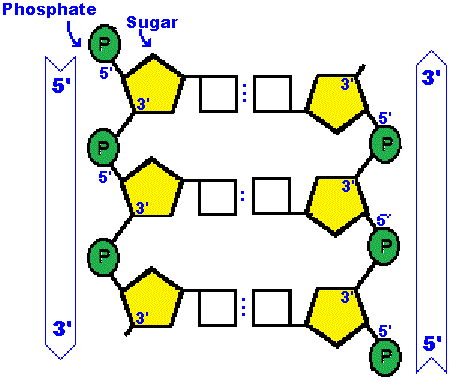
Notice that the sugar is 5-sided.
On one side of the ladder a "pointed end" of the sugar is facing the top.
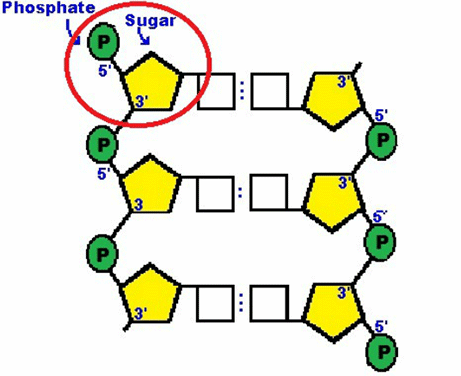
This is called the 5' (five prime) end.
On the other side of the ladder a "flat portion" of the sugar is facing up.
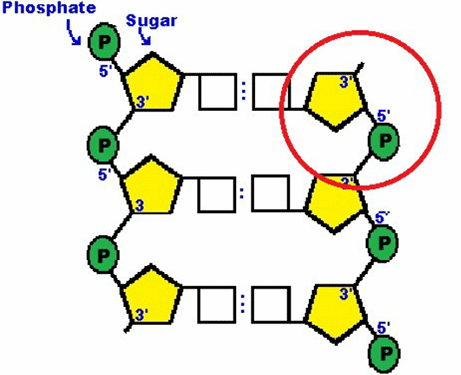
This is called the 3' (three prime) end.
Since one side is 5' and the other side is 3', DNA is said to be antiparallel.
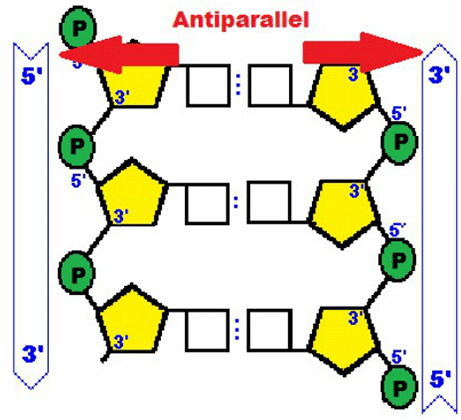
The steps or rungs of the ladder are made up of nitrogen bases.
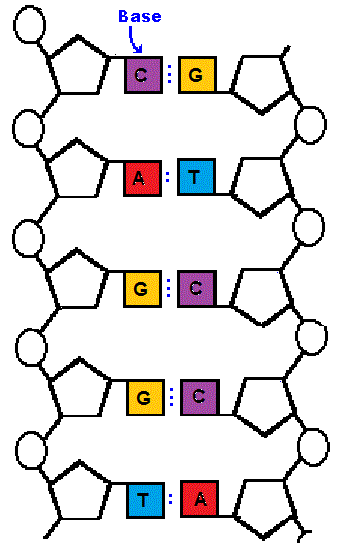
It is the order of these bases that carries our genetic code.

There are 4 nitrogen bases.
- Adenine
- Thymine
- Guanine
- Cytosine
Certain bases always pair together. This is called "The Base Pairing Rule."
Adenine always pairs with Thymine. A-T or T-A
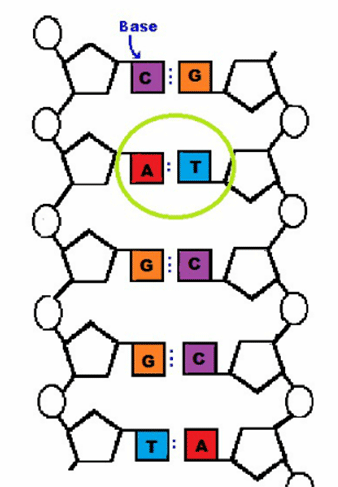
Guanine always pairs with Cytosine. G-C or C-G
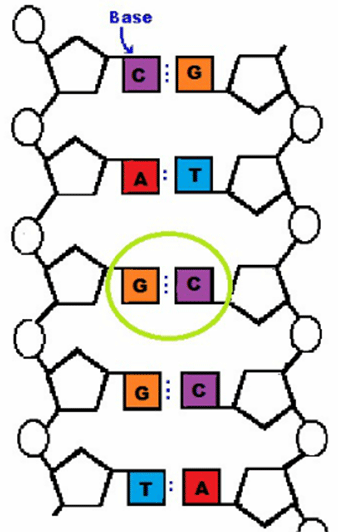
The bases are held together with hydrogen bonds.
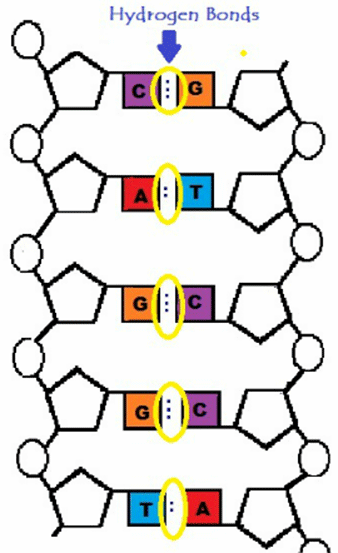
Hydrogen bonds are weak bonds. These weak bonds allow DNA to separate into 2 strands. The ability for DNA to separate into 2 strands is critical to DNA's functions.
There are 3 hydrogen bonds between quanine and cytosine.
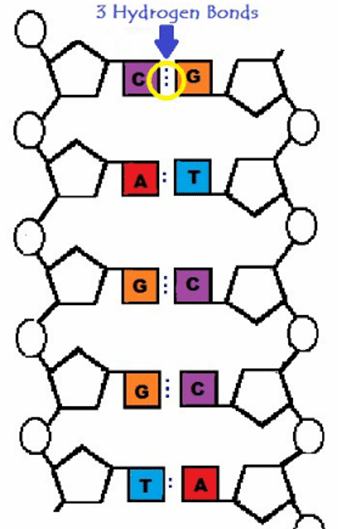
There are 2 hydrogen bonds between adenine and thymine.
